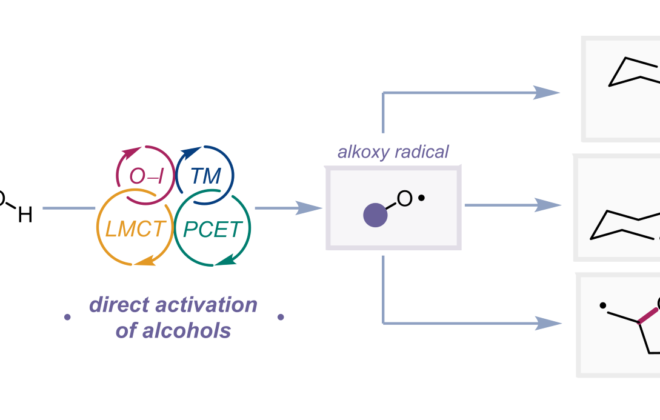41. PCET-Based Ligand Limits Charge Recombination with an Ir(III) Photoredox Catalyst
Hannah Sayre, Hunter H. Ripberger, Emmanuel Odella, Anna Zieleniewska, Daniel A. Heredia, Garry Rumbles, Gregory D. Scholes, Thomas A. Moore, Ana L. Moore, Robert R. Knowles
J. Am. Chem. Soc. 2021, 143, 13034–13043. DOI: 10.1021/jacs.1c01701
https://pubs.acs.org/doi/10.1021/jacs.1c01701
ABSTRACT: Upon photoinitiated electron transfer, charge recombination limits the quantum yield of photoredox reactions for which the rates for the forward reaction and back electron transfer are competitive. Taking inspiration from a proton-coupled electron transfer (PCET) process in Photosystem II, a benzimidazole-phenol (BIP) has been covalently attached to the 2,2′-bipyridyl ligand of [Ir(dF(CF3)ppy)2(bpy)][PF6] (dF(CF3)ppy = 2-(2,4-difluorophenyl)-5-(trifluoromethyl)pyridine; bpy = 2,2′-bipyridyl). Excitation of the [Ir(dF(CF3)ppy)2(BIP-bpy)][PF6] photocatalyst results in intramolecular PCET to form a charge-separated state with oxidized BIP. Subsequent reduction of methyl viologen dication (MV2+), a substrate surrogate, by the reducing moiety of the charge separated species demonstrates that the inclusion of BIP significantly slows the charge recombination rate. The effect of ∼24-fold slower charge recombination in a photocatalytic phthalimide ester reduction resulted in a greater than 2-fold increase in reaction quantum efficiency.





